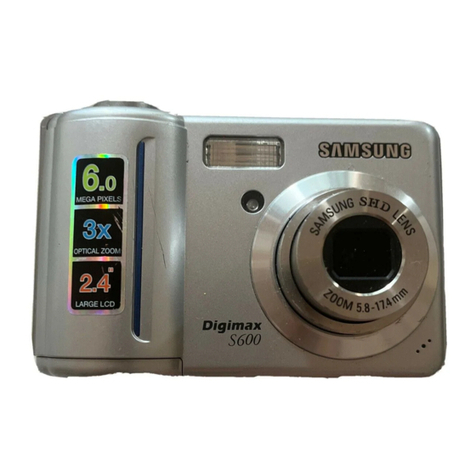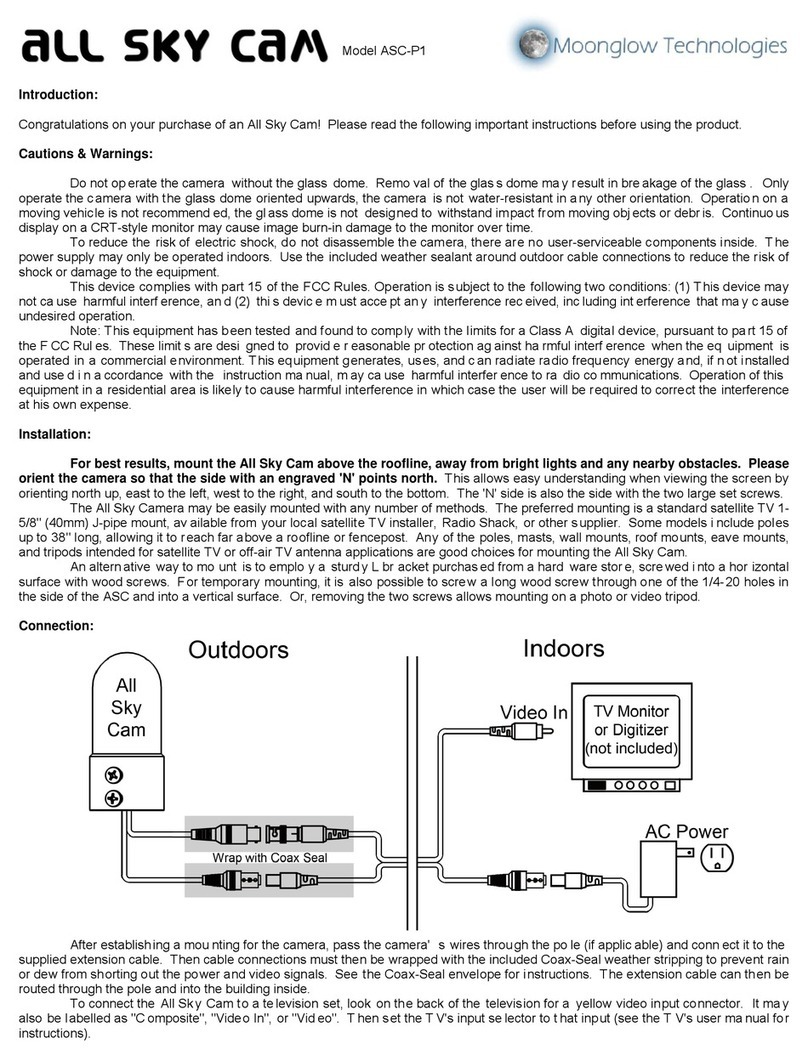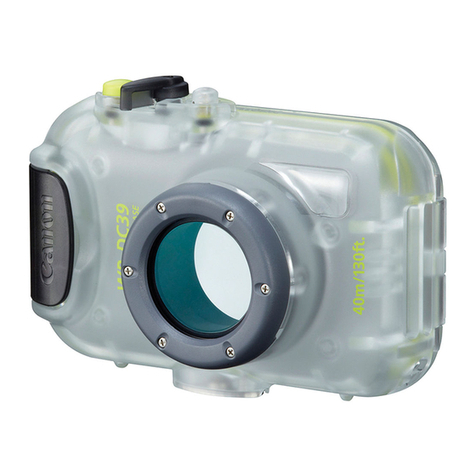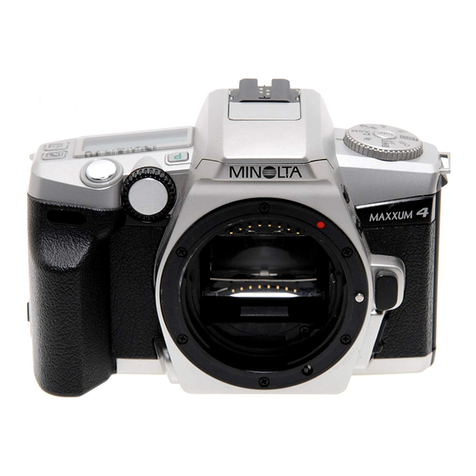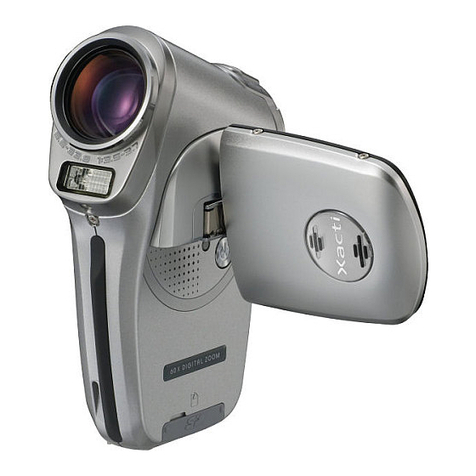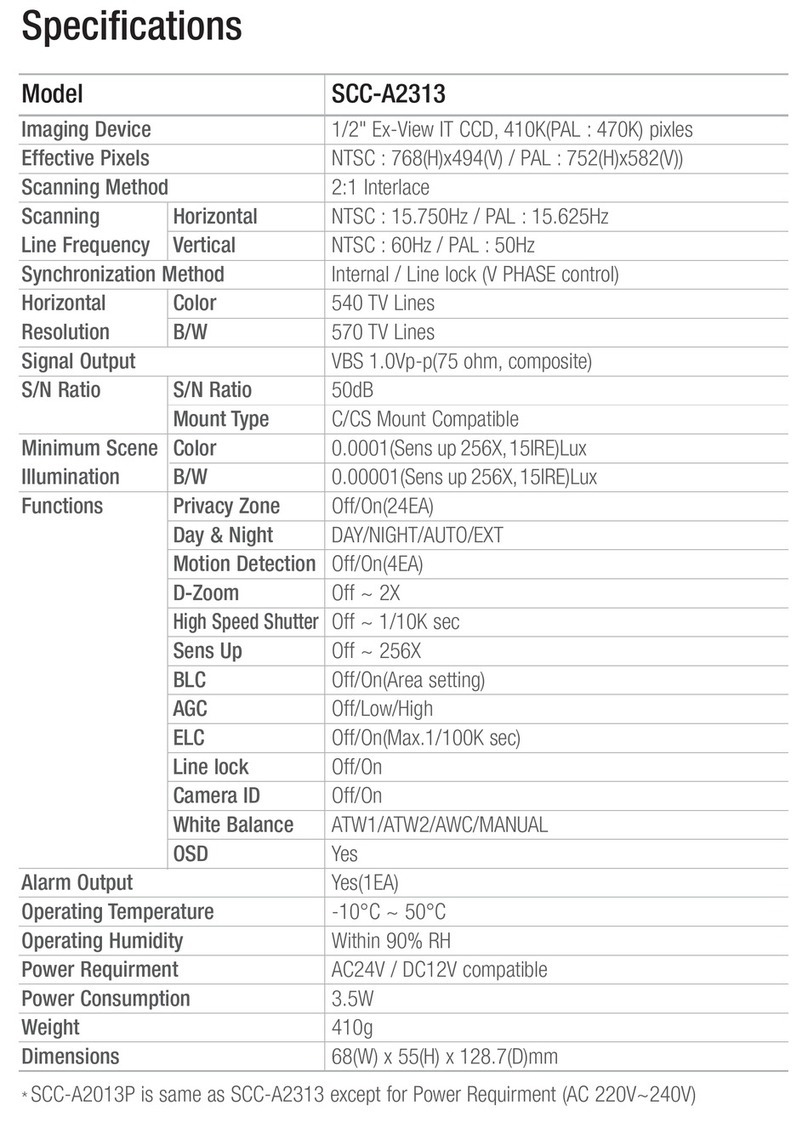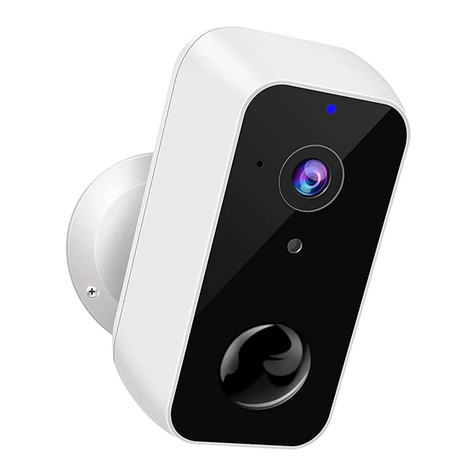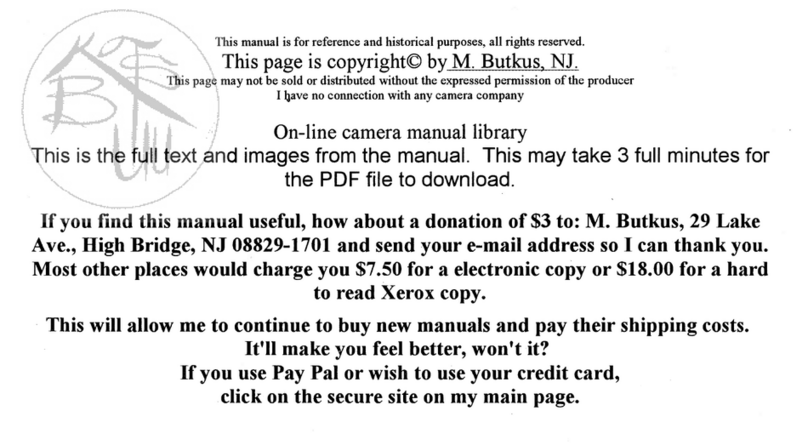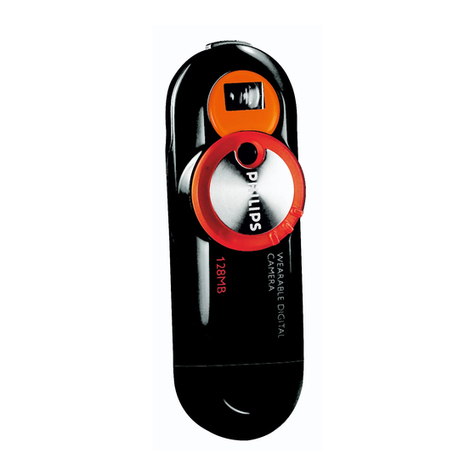SPX Pearpoint P330+ Series User manual

Pushrod cable re-termination guide
Re-teRmination of peaRpoint p330+/p340 and GatoRCam3+/GatoRCam4 pushRods
90/pp_ReteRm/04 issue 4 02/2012 Read and undeRstand this Guide in full befoRe pRoCeedinG
seRviCe Guide

Copyright 2012 Radiodetection Ltd.–SPX Corporation. All rights reserved. Radiodetection is a subsidiary of SPX Corporation.
This document may not be copied, reproduced, transmitted, modified or used, in whole or in part, without the prior written consent of Radiodetection
Ltd. We reserve the right to alter or amend any published specification without notice. Page 2 of 59
P330+/P340, GC3/GC4 Pushrod Cable
Retermination guide
This guide defines when and how to re-terminate the camera end of the following pushrods:-
Pearpoint P341 Plumbers Reel (30m/100’) GatorCam4 Plumbers Reel
Pearpoint P341 Plumbers Reel (60m/200’) GatorCam4 Plumbers Reel
Pearpoint P331 and P341 Reel (35m/115’) GatorCam3+ and GatorCam4 Mini Reel
Pearpoint P332 and P342 Reel (60m/200’) GatorCam3+ and GatorCam4 Std Reel
Pearpoint P332 and P342 Reel (120m/400’) GatorCam3+ & GatorCam4 Std Reel
Pearpoint P333 and P343 Reel (150m/500’) GatorCam3+ & GatorCam4 Std Reel
Note: onwards we shall refer to the current Sales brands Gatorcam 4 and P340 throughout this
manual. The above table is a reference to the equivalent P330 and Gator3 ranges.
Table of Contents
1. Before you begin.............................................................................................3
2. Tools & Equipment..........................................................................................4
3. Slipring Replacement –All Versions .............................................................7
4. P341 Plumbers or GC4 Plumbers Reel (7mm dia.) 93/RP3144Z10..8
4.1. 93/RP3144Z10 Rod-end Re-termination Procedure .........................................................8
4.2. Typical Reel Resistances................................................................................................18
4.3. Pressure Testing.............................................................................................................23
4.4. Bill of Materials / Assembly Drawing...............................................................................24
5. P341 or Gatorcam 4 Mini Reel (35M/115’, 12mm dia.) 10/RP3181 .....26
5.1. RP3181 Rod-End Re-termination Procedure..................................................................27
5.2. Typical Reel Resistances................................................................................................33
5.3. Pressure Testing.............................................................................................................34
5.4. Bill Of Materials / Assembly Drawing ..............................................................................35
6. P342 or Gatorcam 4 Midi Reel (60M/200’ or 120M/400’) 10/RP2809 ....37
6.1. 10/RP2809 Rod-end Retermination Procedure...............................................................38
6.2. Typical Reel Resistances................................................................................................43
6.3. Pressure Testing.............................................................................................................44
6.4. Bill Of Materials / Assembly Drawing ..............................................................................45
7. P343 or Gatorcam 4 Specialist Reel (150M/500’) 93/RP2861 .47
7.1. 93/RP2861 Re-termination Procedure...........................................................................48
7.2 Typical Reel Resistances.................................................................................................54
7.3 Pressure Test ..................................................................................................................54
7.4 Bill of Materials / Assembly Drawing................................................................................56
PLEASE BE CERTAIN TO HEED THE SAFETY WARNINGS ON PAGE 3

Copyright 2012 Radiodetection Ltd.–SPX Corporation. All rights reserved. Radiodetection is a subsidiary of SPX Corporation.
This document may not be copied, reproduced, transmitted, modified or used, in whole or in part, without the prior written consent of Radiodetection
Ltd. We reserve the right to alter or amend any published specification without notice. Page 3 of 59
1. Before you begin
Re-terminations should be performed by a competent technician.
We cannot guarantee or warrant any repairs made by any employee outside of our business,
including other unaffiliated service centres.
It is possible to cause further damage to systems, consequential damage caused by poor
worksmanship will not be covered and the warranty will be considered void. This document is
intended as a guide for customers wishing to re-terminate the reels, however we cannot accept
responsibility for any damages resulting from poor application of our guide.
Due to continuous development of our product details may change. We only offer this guide to
support those customers who agree to assume responsibility for maintaining their own product.
We can offer training and support packages for customers on how to perform this competently.
Enquire with Sales or Service.
Before any re-termination ensure the system is disconnected from the power supply and
mains to ensure safe working. The cameras can become hot, do not look directly into
the camera due to the bright lights, they may cause temporary blindness or longer-term issues.
Potentially hazardous current and voltage sources contained within system when live.
Gloves and other appropriate PPE are strongly advised based on your risk assessment
due to various mechanical, hygienic, electronic and other hazards. If the system is being re-
terminated in a clean area ensure it has been suitably cleaned for the purpose.
Before you attempt any re-termination it is worth checking the video settings are correct for your
reel. For each different length of reel a different amplifier is used to boost the video signal. If this
is set incorrectly it will give a poor signal that may be misinterpreted as a cable fault.
You will need a colour copy of this guide due to colour coded wires and information.
Be aware of and take precautions against ESD. It is advised as part of your risk assessment you
consider the MSDS sheets available online from the 3rd party products required for some repair
operations. Consider PPE as part of this review.
Warning
Use extreme caution when using tools or industrial products or preparations.
When using the junior hacksaw, avoid inhaling or ingesting the glass fibre dust. Consider PPE.
When using the epoxy potting compound, avoid contact with skin.

Copyright 2012 Radiodetection Ltd.–SPX Corporation. All rights reserved. Radiodetection is a subsidiary of SPX Corporation.
This document may not be copied, reproduced, transmitted, modified or used, in whole or in part, without the prior written consent of Radiodetection
Ltd. We reserve the right to alter or amend any published specification without notice. Page 4 of 59
2. Tools & Equipment
Some or all of the following tools will be required depending on which re-termination is being done :-
Junior Hacksaw (150mm / 6”)
Fine wire cutters / Adjustable precision wire stripper, 0.25-0.80mm.
(such as RS®Stock No. 622-721)
Triple-action cable stripping tool, 4.5-29mm strip
{such as Tavismanor ROT29RTGRS01/001 (RS Stock No. 262-0151)}
Scalpel / craft knife
Heatgun appropriate for small heatshrink applications (see pictures)
Scotchweld®DP100 needle applicator
Digital Volt Meter
Soldering iron \ Solder
Pressure test Jig Part: 09/RP3210Z2 with regulated airline or foot pump with
pressure gauge
15mm & 16mm open-ended spanners
Open-ended torque spanner with 15mm/16mm heads
Internal circlip pliers
“C” Spanner
Special Tools:-
Dual Size “C” Spanner,
- Available from Pearpoint / Radiodetection, part number 70/GC2011N14
Torque wrench
Typical wire stripper

Copyright 2012 Radiodetection Ltd.–SPX Corporation. All rights reserved. Radiodetection is a subsidiary of SPX Corporation.
This document may not be copied, reproduced, transmitted, modified or used, in whole or in part, without the prior written consent of Radiodetection
Ltd. We reserve the right to alter or amend any published specification without notice. Page 5 of 59
Typical multi-purpose cable
stripper
Scotchweld DP100 two-part
quick-set epoxy structural
adhesive (50ml cartridge).
Adhesive dispenser gun, 50ml
cartridge.
Warning
Use extreme caution when using sharp tools.
When using the junior hacksaw, avoid inhaling or ingesting the glass fibre dust.
When using the epoxy potting compound, avoid contact with skin.
Additional materials to be obtained locally:-
Loctite®222 as required (Farnell / Element14 Stock No.1370113)
Loctite 243 as required (Farnell / Element14 Stock No.1370152)
PTFE grease (e.g. Super Lube) (Farnell / Element14 Stock No.537159)
1.6mm Heatshrink
(Farnell / Element 14 stock no. Allied Electronics stock no)
Scotchweld DP100 two-part quick-set epoxy structural adhesive (50ml cartridge)
(Farnell / Element14 stock No. 1702758 / Allied Electronics stock no. 617-7001)
Adhesive dispenser gun, 50ml cartridge

Copyright 2012 Radiodetection Ltd.–SPX Corporation. All rights reserved. Radiodetection is a subsidiary of SPX Corporation.
This document may not be copied, reproduced, transmitted, modified or used, in whole or in part, without the prior written consent of Radiodetection
Ltd. We reserve the right to alter or amend any published specification without notice. Page 6 of 59
(Farnell®/ Element14®stock no. 1711526/ Allied Electronics stock no. 365-7000)
DP8005 mixer nozzle
(Farnell / Element14 Stock No. 1691657 / Allied Electronics stock no. 365-7005)
Additional needle applicators
(Farnell / Element14 stock no. 3975575 / Allied Electronics stock no.984-3187 / 984-3190)
Third party part numbers are quoted for reference only. Any third-party products mentioned in this
manual are for instructional purposes only and are not an endorsement by Radiodetection Ltd and
SPX Corporation.
Radiodetection Ltd does not accept any liability for loss or damage to equipment or materials
when using any third-party products.

Copyright 2012 Radiodetection Ltd.–SPX Corporation. All rights reserved. Radiodetection is a subsidiary of SPX Corporation.
This document may not be copied, reproduced, transmitted, modified or used, in whole or in part, without the prior written consent of Radiodetection
Ltd. We reserve the right to alter or amend any published specification without notice. Page 7 of 59
3. Slipring Replacement –All Versions
There are two types of slipring PCB, they are not interchangeable and should never be mixed.
Poor video quality will result.
The 10/RP2809-4 ROD-END slipring PCB is at the end of the ROD and has a 6-way connector.
Kit Contains: Rod termination Slipring PCB, O-ring, Circlip
The SONDE-END Slipring PCB goes at the end of the SONDE, it has a different PCB and a 4-way
connector to prevent accidental use (the PCB is visually similar - beware).
Order: 09/RP2816ZBD-V0 (PCB), 04/XVH62S02 (circlip), 07/B01204016 (o-ring).
Slide back the shroud nut and carefully secure
the connector in a vice.
Using a 2mm –3mm screw-driver or similar,
carefully prise out the circlip that secures the
slip-ring PCB. One end of the circlip is tapered
to facilitate this.
Using a craft knife or similar, lift out the slip-
ring PCB and remove the mini-Molex®
connector from the back of the PCB.
Plug the mini-Molex connector into the rear of the new slip-ring PCB then push the wires and the
PCB down into the connector being careful not to squash or damage any wires.
Secure the PCB in position with the new circlip, ensuring the circlip is properly seated in its
groove.
Remove the old O-ring. Lightly grease the new O-ring with PTFE grease and fit to the connector.

Copyright 2012 Radiodetection Ltd.–SPX Corporation. All rights reserved. Radiodetection is a subsidiary of SPX Corporation.
This document may not be copied, reproduced, transmitted, modified or used, in whole or in part, without the prior written consent of Radiodetection
Ltd. We reserve the right to alter or amend any published specification without notice. Page 8 of 59
4. P341 Plumbers or GC4 Plumbers Reel (7mm dia.) 93/RP3144Z10
Rod Camera-End Retermination
Materials required:-
Rod Re-termination Kit 93/RP3144Z10
These instructions detail the re-termination procedures for both the P341 30m / 60m Plumbers
reels and GatorCam4 30m / 60m Plumbers reels. Ensure that you read and understand these
instructions in full before proceeding.
4.1. 93/RP3144Z10 Rod-end Re-termination Procedure
Remove the camera from the sonde spring, place out of the way.
Ensure that all damaged rod is removed from the reel. Cut off the damaged rod with the junior
hacksaw.
Pull out sufficient rod from the reel to facilitate the repair and lock the brake.
Remove the M3 x 4 grub screw
from the side of the rod cover,
using the 1.5mm AF Allen key.
This screw is secured with
Loctite 222.
Insert the M3 x 25mm caphead
screw into the grub screw socket
until it is hand-tight.
r

Copyright 2012 Radiodetection Ltd.–SPX Corporation. All rights reserved. Radiodetection is a subsidiary of SPX Corporation.
This document may not be copied, reproduced, transmitted, modified or used, in whole or in part, without the prior written consent of Radiodetection
Ltd. We reserve the right to alter or amend any published specification without notice. Page 9 of 59
Using the “C” spanner to hold
the spring body, loosen the rod
cover from the spring body by
using the caphead screw as
leverage.
Undo the rod cover and slide it
away from the sonde spring.
Remove and discard the 6mm
and 15mm O-rings.
Ease the termination nut out the
spring body, taking care not to
damage the four wires.
Using a scalpel or craft knife
carefully slit the heat shrink that
covers the four solder posts and
the ends of the wires, cutting
from the base of the posts. De-
solder the wires and discard the
heatshrink.
Warning: If the insulation on any of
the wires is damaged, they will have to
be cut back, stripped of 4-5mm of
insulation and tinned. If too much of
any wire is removed, the sonde
cableform assembly will have to be
replaced.
Remove and discard
any damaged rod

Copyright 2012 Radiodetection Ltd.–SPX Corporation. All rights reserved. Radiodetection is a subsidiary of SPX Corporation.
This document may not be copied, reproduced, transmitted, modified or used, in whole or in part, without the prior written consent of Radiodetection
Ltd. We reserve the right to alter or amend any published specification without notice. Page 10 of 59
Cut the end of the rod squarely with the
junior hacksaw.
Slide the rear cover over the end of the
Rod followed by the new 6mm O-ring.
Push back out of the way.
Score through full thickness of the outer
sheath at 60mm from the end of the rod,
taking care not to cut into the inner foil
layer.
Use suitable rotary cable stripping tools.
(NOTE: we have found scalpels to be
unsuitable and dangerous for this task.
Do not use them)
New 6mm O-ring
Rear
Cover

Copyright 2012 Radiodetection Ltd.–SPX Corporation. All rights reserved. Radiodetection is a subsidiary of SPX Corporation.
This document may not be copied, reproduced, transmitted, modified or used, in whole or in part, without the prior written consent of Radiodetection
Ltd. We reserve the right to alter or amend any published specification without notice. Page 11 of 59
Typical multi-purpose cable stripper
Strip off the 60mm of the outer sheath, using a
suitable Multi-purpose Cable Stripping tool to
avoid damage to the inner foil and wires.
Ensure that the cutting depth of the stripping
tool is correctly set to cut the outer sheath
through without damaging the inner foil
wrapping layer. Several attempts may be
necessary to set the tool to the correct depth.
Uncoil and remove the foil layer.
Cut away the 6 x plastic filler strands back to
the end of the outer sheath.
Remove Foil
Remove 6 x filler
strands

Copyright 2012 Radiodetection Ltd.–SPX Corporation. All rights reserved. Radiodetection is a subsidiary of SPX Corporation.
This document may not be copied, reproduced, transmitted, modified or used, in whole or in part, without the prior written consent of Radiodetection
Ltd. We reserve the right to alter or amend any published specification without notice. Page 12 of 59
15mm
Cut the fibreglass core to 15mm from the outer
sheath of the rod, using the junior hacksaw.
Cut the brown, green, yellow, red, blue and
drain wires back to 50mm long.

Copyright 2012 Radiodetection Ltd.–SPX Corporation. All rights reserved. Radiodetection is a subsidiary of SPX Corporation.
This document may not be copied, reproduced, transmitted, modified or used, in whole or in part, without the prior written consent of Radiodetection
Ltd. We reserve the right to alter or amend any published specification without notice. Page 13 of 59
Strip the insulation of the green, brown, red,
blue and yellow wires back to 10mm from the
outer sheath of the rod, using the precision wire
stripper or small wire cutters.
Twist the bare strands of each wire to ease the
fit into the PCB.
Slide a 10mm length of 1.6mm heatshrink over
the drain wire, push down until it touches the
cable outer sheath and apply heat to shrink.
10mm
10mm

Copyright 2012 Radiodetection Ltd.–SPX Corporation. All rights reserved. Radiodetection is a subsidiary of SPX Corporation.
This document may not be copied, reproduced, transmitted, modified or used, in whole or in part, without the prior written consent of Radiodetection
Ltd. We reserve the right to alter or amend any published specification without notice. Page 14 of 59
Check that the termination PCB fits
snugly into the termination nut. If
necessary, carefully trim the edge of
the board with a fine file or craft
knife.
Note: using cutting tools by hand
can be dangerous. Consider gloves,
PPE or the file as a safer alternative.
Screw the threaded termination nut
squarely onto the end of the rod until
the outer sheath is flush with the
inside rear of the metalwork.
4
3
2
1
Tin the four pins of the terminal
PCB.
Termination Nut
Outer Sheath

Copyright 2012 Radiodetection Ltd.–SPX Corporation. All rights reserved. Radiodetection is a subsidiary of SPX Corporation.
This document may not be copied, reproduced, transmitted, modified or used, in whole or in part, without the prior written consent of Radiodetection
Ltd. We reserve the right to alter or amend any published specification without notice. Page 15 of 59
BLUE
VID 0V
BROWN
PWR+
DRAIN
YELLOW
0V
GREEN
VID-
RED
VID+
Feed the correct colour wires
through the rear of the termination
PCB, as shown
Feed the correct colour wires
through the rear of the termination
PCB.
PCB

Copyright 2012 Radiodetection Ltd.–SPX Corporation. All rights reserved. Radiodetection is a subsidiary of SPX Corporation.
This document may not be copied, reproduced, transmitted, modified or used, in whole or in part, without the prior written consent of Radiodetection
Ltd. We reserve the right to alter or amend any published specification without notice. Page 16 of 59
Push the PCB down over the
fibreglass core, keeping the wires
taut, onto the termination nut until it
is flush with the top of the
metalwork.
With the termination PCB in position
check that none of the wires are
shorting out either to each other, or
the metalwork, by connecting a DVM
between each individual wire and all
the other wires in turn, as well as to
the case.
Keeping the PCB flush with the top
of the metalwork, solder the wires to
the PCB and crop all of the wires to
2mm from the board.
Disconnect the reel connector from
the hub assembly by turning the
round, ridged plug connector
through 90° anti-clockwise.
Termination nut

Copyright 2012 Radiodetection Ltd.–SPX Corporation. All rights reserved. Radiodetection is a subsidiary of SPX Corporation.
This document may not be copied, reproduced, transmitted, modified or used, in whole or in part, without the prior written consent of Radiodetection
Ltd. We reserve the right to alter or amend any published specification without notice. Page 17 of 59
Using the DVM, check for continuity
from the reel connector to the
termination PCB.
Reel Connector Termination PCB
7 WAY
REEL PLUG
ROD WIRE
PCB
1
2
3
RED
VID+ ONLY
4
BLUE / DRAIN / YELLOW
VID 0V/ DRAIN / 0V
5
GREEN
VID- ONLY
6
DRAIN / YELLOW / BLUE
DRAIN / 0V / VID0V
7
BROWN
PWR+ ONLY
NOTE: Positions 1 and 2 at the seven way plug are wired to the reel counter reed switches,
therefore pins 1 and 2 will alternate from open to closed circuit relative to pin 4 as you rotate
the reel.
Reel Connector

Copyright 2012 Radiodetection Ltd.–SPX Corporation. All rights reserved. Radiodetection is a subsidiary of SPX Corporation.
This document may not be copied, reproduced, transmitted, modified or used, in whole or in part, without the prior written consent of Radiodetection
Ltd. We reserve the right to alter or amend any published specification without notice. Page 18 of 59
P341
Plumbers
& GC4
Plumbers
Termination PCB
VID+
VID-
PWR+
GND
Reel connector
1
2
3
< 10Ω
∞
∞
∞
4
∞
< 10Ω
> 10kΩ
< 10Ω
5
∞
45 to 60Ω
> 10kΩ
45 to 60Ω
6
∞
< 10Ω
> 10kΩ
< 10Ω
7
∞
> 10kΩ
< 10Ω
>10kΩ
4.2. Typical Reel Resistances
7-Way reel plug
Signal
Slipring PCB
30m/100’ Reel
Resistance (Ω)
60m/200’ Reel
Resistance (Ω)
1
Not Connected
2
3
Vid +
Ring 1 (centre)
2.9
5.4
4
Gnd
Ring 4 (outer)
2.9
5.4
5
Vid -
Ring 2
50.1
52.3
6
Gnd
Ring 4 (outer)
1.1
1.9
7
Power +
Ring 3
2.8
5.4
Be aware that these values may change if the reel length has been significantly changed or cut
back during service operations!

Copyright 2012 Radiodetection Ltd.–SPX Corporation. All rights reserved. Radiodetection is a subsidiary of SPX Corporation.
This document may not be copied, reproduced, transmitted, modified or used, in whole or in part, without the prior written consent of Radiodetection
Ltd. We reserve the right to alter or amend any published specification without notice. Page 19 of 59
Load a tube of two-part quick set epoxy
resin into an application gun.
Use a needle applicator to pot the
termination PCB into the termination
nut.
Insert the resin into the runner hole in
the PCB until it appears out of the riser
hole.
Ensure that the PCB is level and flush
with the top edge of the termination nut.
Keep the assembly level and allow the
epoxy to settle for 3-5 minutes and top
up if necessary.
Leave epoxy to set for at least 15
minutes, it will cure fully in 24 hours.
Runner
hole
Riser hole

Copyright 2012 Radiodetection Ltd.–SPX Corporation. All rights reserved. Radiodetection is a subsidiary of SPX Corporation.
This document may not be copied, reproduced, transmitted, modified or used, in whole or in part, without the prior written consent of Radiodetection
Ltd. We reserve the right to alter or amend any published specification without notice. Page 20 of 59
Lightly coat the new 15mm O-ring with
PTFE grease and fit onto the terminal
nut.
If the sonde wires have had to be cut
back, strip the insulation on the four
wires back to 4-5mm and twist and tin
the ends.
Slide a 5mm length of the 1.6mm
heatshrink over each of the four wires
from the rod end of the sonde.
Solder the four wires from the rod end
of the sonde to the termination PCB as
shown in the chart above.
NOTE: Solder the wires on the inside of
the pins to minimise the chance of
shorting to the
metal-work.
Slide the heatshrink over the joints and
apply the heat gun to shrink.
Slide the 6mm O-ring along the rod up
to the rear of the terminal nut.
6mm O-ring
Rod
end
This manual suits for next models
14
Table of contents
Other SPX Digital Camera manuals
Popular Digital Camera manuals by other brands

Bell and Howell
Bell and Howell Electric Eye 8mm Camera How to use
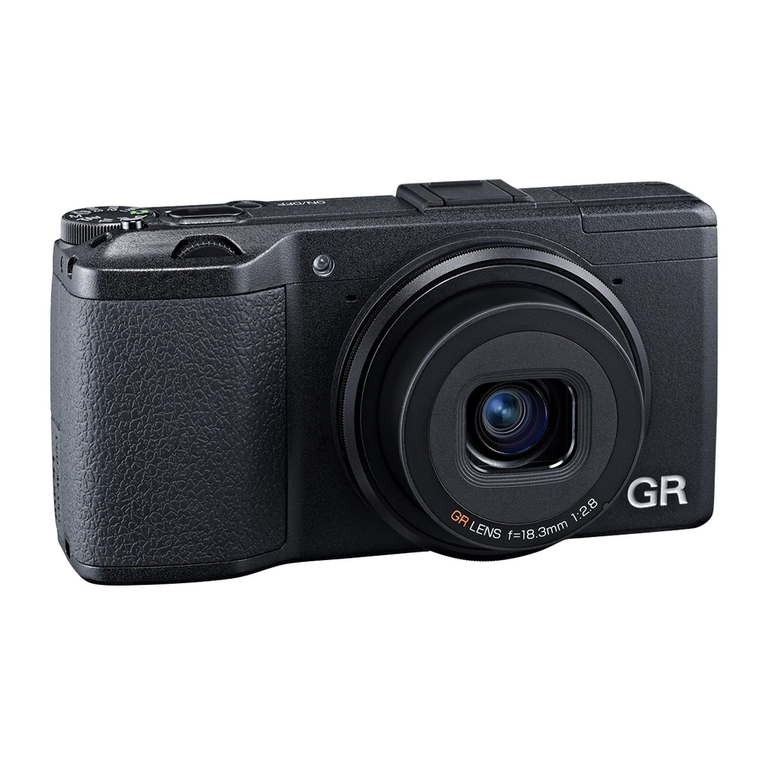
Ricoh
Ricoh GR DIGITAL M instruction manual
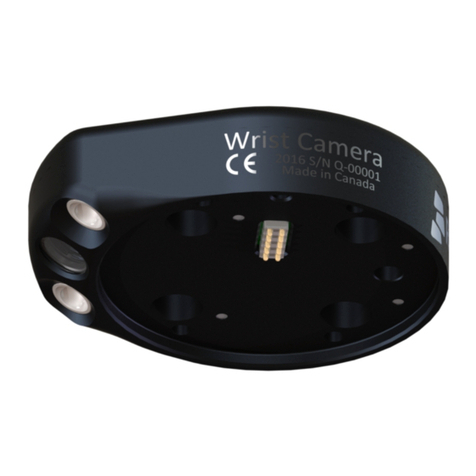
ROBOTIQ
ROBOTIQ RWC-UR-KIT instruction manual
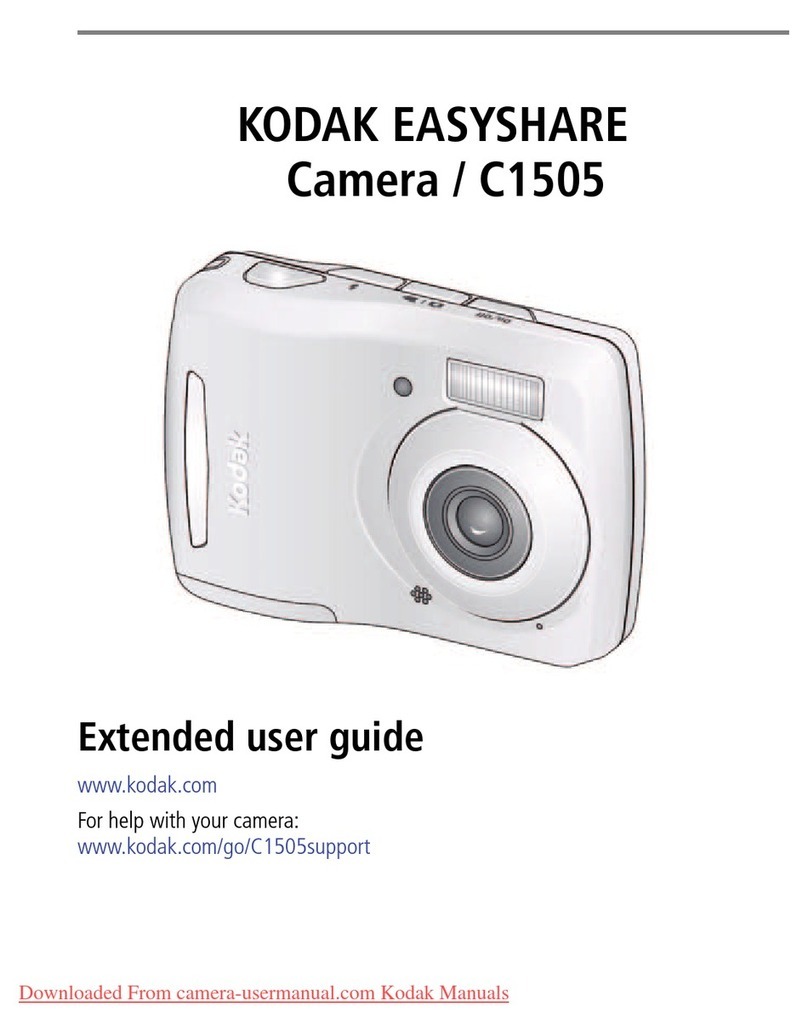
Kodak
Kodak EASYSHARE C1505 Extended user guide
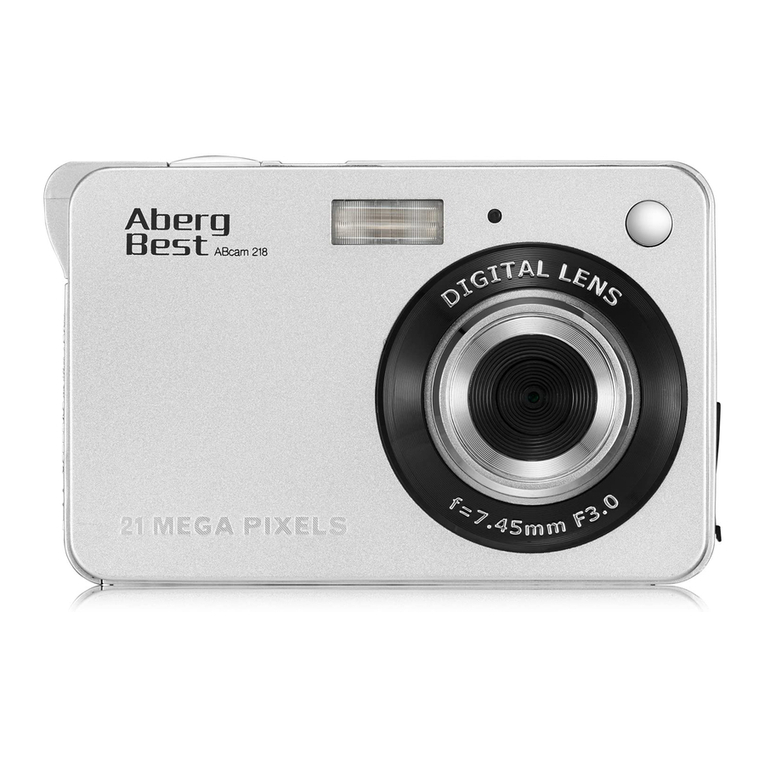
Aberg Best
Aberg Best ABcam 218 user manual

Insignia
Insignia NS-DSC10B - Digital Camera - Compact user guide



